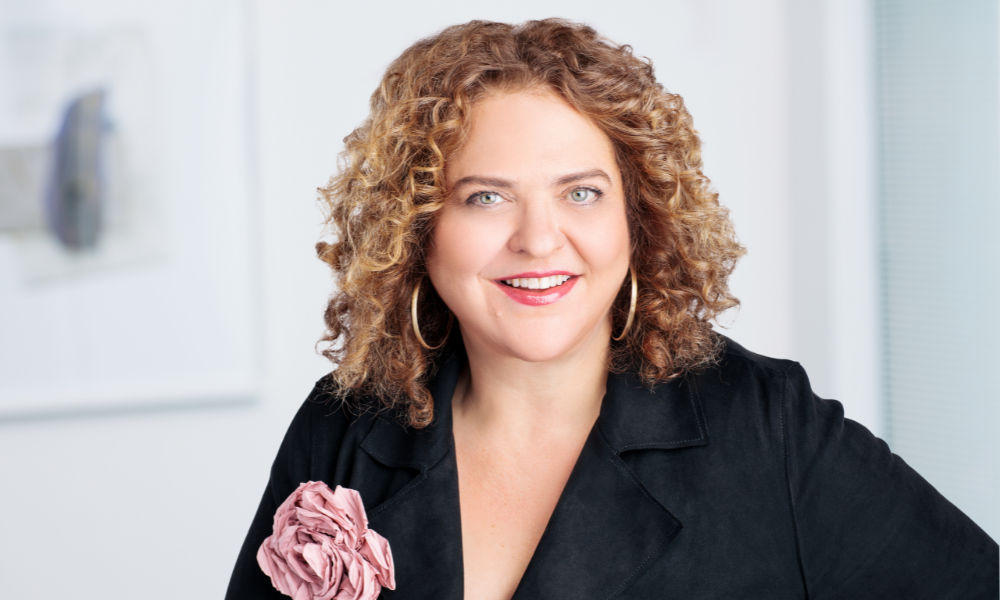Where you plant your roots makes all the difference, especially for a CHRO.
HR Brew, using a data analysis provided by Live Data Technologies, reviewed the educational and professional histories of more than 16,400 current CHROs and chief people officers (CPOs) to identify trends in their journeys to the C-suite. Based on our findings, and conversations with HR experts, the path to the top of HR doesn’t appear to be too different from that of any other function: Where you go to school is important, but where you build your career is even more crucial.
Get B-schooled. Where you go to school isn’t everything, but some universities seem to offer CHRO hopefuls a better chance at landing atop the HR throne. The most-attended schools, according to Live Data Technologies’ analysis, include those with top-notch HR curriculums.
Cornell, the most-attended school in our dataset, has an undergraduate industrial labor relations program that’s known to have produced top HR chiefs, including Intel’s Christy Pambianchi, IBM’s Nickle LaMoreaux, and Nordstrom’s Farrell Redwine. Six Big Ten business schools were among the top 20 universities, including Michigan State, Penn State, the University of Michigan, the University of Illinois at Urbana-Champaign, Purdue, and Ohio State.
The most common field of study was, unsurprisingly, human resources (14.8%), followed by business administration (8.83%) and psychology (7.69%).
Of the CHROs and CPOs in our dataset who attained a bachelor’s degree, 42.7% went on to earn a master’s degree. An MBA seems to be a wise investment for aspiring CHROs and CPOs, Tony Hazen, VP and senior partner at Tatum, Randstad’s executive search practice, told HR Brew. Such a degree can help them gain a broader understanding of business, enabling them to serve as more strategic partners to the CEO, he added.
“I’ve just noticed that HR executives who come out of those business schools have their MBAs…sometimes you forget you’re talking to an HR executive in the sense that they just seem so business sound, and so focused on the mission,” Hazen said. “And CEOs love those CHROs.”
Career choices. Many top executives, including CHROs, spend at least part of their careers at “academy companies,” or those known for producing leaders who go on to helm other companies. These companies often offer a wide range of leadership development opportunities, including exposure to parts of the business outside of a rising leader’s primary function.
Accenture, Deloitte, PepsiCo, GE, and PwC were the top companies where the CHROs and CPOs captured in our dataset were most likely to have worked at some point in their careers. All of these companies are considered incubators for top talent.
Accenture, which has produced HR executives including ServiceNow’s Jacqui Canney, McKesson’s LeAnn Smith, and PepsiCo’s Becky Schmitt, ensures early exposure to the business for its people professionals. Since 2016, incoming HR professionals at the Irish-American consulting firm have participated in its Talent Accelerator Program, a two-year initiative that has them rotate through various client-facing roles.
Meanwhile, other academy companies, including Amazon, IBM, and McKinsey, were among the most popular to have worked for immediately before taking the top job.
“If you did a Pareto on companies, where did people grow up? Where did they get trained? There’s classic Academy companies: IBM, PG, GE, Bank of America, Pepsi, J&J. Amazon is becoming more and more of an academy company for HR,” Steve Patscot, who leads Spencer Stuart’s North American HR practice, told HR Brew. He later added, “As an old GE alumni, I had hundreds of thousands of dollars invested in me in my training and career and background. The Human Resources Leadership Program was considered one of maybe two or three in the country that, if you wanted to be an HR person, you’d try to get on.”
Quick-to-read HR news & insights
From recruiting and retention to company culture and the latest in HR tech, HR Brew delivers up-to-date industry news and tips to help HR pros stay nimble in today’s fast-changing business environment.
The most common title to have held before stepping into the CHRO or CPO role was “director of HR” (16%), followed by “VP of HR” (15%). Leaders in these roles typically oversee the full HR function, but in a junior capacity compared to the CHRO or CPO, Hazen said.
“Usually before they get into the CHRO seat, they’re going to have to have the whole show under them, but at a level below the CHRO,” Hazen said.
Not all of the CHROs and CPOs in our dataset worked at such a company right before their C-suite appointment. In fact, 11% had an employment gap. Some may have been let go, either as part of a restructuring plan, as Hazen suggested, or a CEO transition. After all, it’s common for a new chief executive to want to staff their own C-suite, and HR leaders are among those most likely to be replaced. But others may have taken a break due to the burnout that plagued many people professionals in the wake of the pandemic, Patscot said.
After employment gaps, HR leaders were also likely to have been self-employed, perhaps pursuing consulting or fractional CHRO roles as they considered their next career moves.
But things are changing. While this data highlights the primary paths today’s CHROs and CPOs have taken to their current roles, they may change in the future.
Fewer companies are investing in leadership development, said Patscot, and CEOs’ expectations of HR leaders are evolving.
“The number one skill set that we’re hearing from CEOs, and this is a pretty big change from before the pandemic, is, ‘I want a first principled thinker,’” Brad Warga, co-head of Heidrick & Struggles global HR practice, told HR Brew. “What they mean is, ‘I want a creative problem solver, I want someone who’s analytical and data-driven, I want someone who’s intellectually curious. And I need that because the playbooks that we used to run, that all the academy HR companies had, are no longer relevant.’”
Future CHROs and CPOs will likely be those who have experience working closely with other functions, such as HR business partners, or those who oversee some strategic initiative, like talent strategy, Patscot and Warga said. Just 0.5% of today’s people leaders were HR business partners immediately before serving as CHRO or CPO, and 0.6% were chief talent officers.
“If I close my eyes and I make one big prediction for 10 years from now, you’re going to see the HR function full of people who are much more diverse in their skill sets,” Patscot said.





